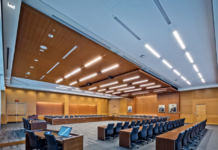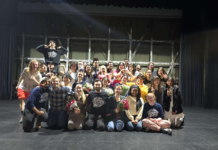Statistics may not tell the whole truth. From 2012 - 2014, UW recorded a total of seven sexual assault cases, with no individual year exceeding three cases. With a number so low, has UW managed to effectively address the issue of sexual assault on its campus? </p>
According to a report by CBC, in 2014, campuses across Canada were reporting low numbers of sexual assaults, while some schools even reported having zero cases on their campuses.
“The statistics from campuses should be far higher than what we’re seeing,” said Sara Casselman, the executive director at the Sexual Assault Support Centre of Waterloo. “We really need to be careful about how we interpret that data because we do know that less than 10 per cent of sexual assaults are reported, and that one in three women will have that experience and [university-aged] women have that experience at much higher rates.”
While not addressing UW specifically, Casselman believes that in certain cases, reputation may account for why there is a discrepancy in statistics.
“Sometimes, it’s perceived that universities are more worried about reputations than accurately reporting stats, or making or having a climate where students feel really encouraged or safe to disclose,” said Casselman.
Casselman attended the 2015 Summit on Sexual Violence and Harassment Nov. 19-20. Like its name suggests, this summit brought together a diverse group of leaders in the field of sexual violence and harassment. Youth were also present at this meeting, sharing their own insight and experiences with the topic.
“Often there’s this concern that universities have that it will make it appear that their campus is not safe if the numbers are really high in regards to sexual assault,” said Casselman, reflecting on a discussion led by some of the student attendees.
As Casselman sees it, having higher report rates isn’t necessarily a bad thing.
“What I think is really refreshing is when we see universities tackling it head-on and understanding that getting those higher number of those sexual assaults is likely an indicator of success. It’s likely an indicator that they are creating a climate where students feel safe to report their experiences,” said Casselman.
At UW, statistics around sexual assault are collected through Campus Police, although the total number of sexual assaults reported for this year are yet to be tallied. Cases of students seeking counselling services for sexual violence or those who have confided in other on-campus services are not accounted for in this statistic.
“Basically, so far we are recording [police] reports. The disclosures have been handled under that confidentiality umbrella,” said Mahejabeen Ebrahim, the director of equity at UW’s Equity Office.
In order to further understand and deter the sexual violence and harassment present in Ontario, earlier this year the Ontario government introduced the initiative It’s Never Okay: An Acton Plan to Stop Sexual Violence and Harassment. According to the document, the purpose of this initiative was to enable a space where “everyone lives in safety and is free from the threat, fear, or experience of sexual violence and harassment.”
As a facet of this initiative, Bill 132 was enacted to address various aspects of sexual harassment and violence. Through this bill, Ontario universities are being pushed to create a more encompassing system to measure sexual assaults on campus.
“It is a very comprehensive plan that the provincial government has implemented and I think it’s an effort that’s extremely important. It’s very well intentioned, and in terms of the overall plan, it is to develop a centralized method, going back to the stats issue, of having all universities use the same method for developing statistics,” explained Rashmee Singh, an assistant professor in the department of sociology and legal studies.
UW is working to refine its sexual assault statistics management and other assisting services based on this outline.
In the management and tracking of statistic around sexual violence on campuses, one of the challenges post-secondary institutions face is that there isn’t a concrete understanding of what sexual assault is.
According to Ebrahim, UW’s definition is the same as the Criminal Code.
“If I have to put it in simpler terms, I might say any unwanted sexual activity or sexual activity without the consent of the individual would be sexual assault,” explained Ebrahim.
While UW may have a concrete standard of what sexual assault looks like, there is still a lot of ambiguity around what it entails.
“If a university intends to develop a system for tracking incidences or keeping statistics, we run into definitional issues,” said Singh. If a student is seeking counselling for a sexual assault that happened years prior to their enrolment, does their experience qualify? Would we only count incidences that happen on our campus? If the perpetrator wasn’t a student, would this qualify? “We are trying to figure all of that out and those are important definitional issues that we need to consider before developing a system,” said Singh.
The way UW currently counts for sexual assault incidents is when both the perpetrator and survivor belong to the UW community. While Singh doesn’t feel that definitional issues are the central problem in the assessment of sexual violence statistics, she does say that they add greater challenge in gauging the extent of sexual violence present on the UW campus.
“The incidences that we want to know about, we’re pretty clear about. If we want to assess whether this is a safe space and a safe campus, we want to look at incidences that generally occur within the campus community,” Singh said. “An incident can occur off of the university campus itself, at a club or at a party or whatever, but if it involves another student, then that’s considered a campus community issue.”
For Singh, the take-home message in the discussion around statistics isn’t found within numbers. “Regardless of the question of whether we have accurate numbers, we all know that this still happens and it’s still a problem, and we need to continually address it and there’s sort of this preoccupation with getting accurate statistics which I just don’t think should always be a preoccupation. We know it happens, and we need to address it.”

































